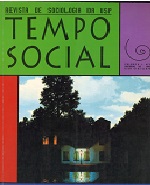Lynching, the dark side of the conservative mind
DOI:
https://doi.org/10.1590/ts.v8i2.86293Keywords:
Lynchings, Vigilantism, Popular justice, Antijudicial justiceAbstract
The various cases of lynching in Brazil in the last 20 years suggest that the social changes are occuring in a direction opposed to the one of social scientists’ cognitive orientations. The lynchings point out that popular culture in the circumstances of excluding development and modernization is not always and necessarily concerned with affirming traditions which dignify the man and assert his emancipation and liberty. There is no doubt the lynchings reveal a mentality compromised with the primacy of the social and of the rights of society regarding the individual. But they reveal it in its most opressing and punitive dimension, incorporating violent forms of exclusion and of ritual dehumanization of its victims.Downloads
References
ANDRADE, Maristela. (1991) Violência contra crianças camponesas na Amazônia. In: MARTINS, José de Souza (coord.). O massacre dos inocentes (a criança sem infância no Brasil). São Paulo, Editora Hucitec.
BEASLEY, Maurine. (1982) The muckrakers and lynching: a case study in racism. Journalism History, 9 (3-4): 86-91, autumn-winter.
BENEVIDES, Maria Victoria. (1982) Linchamentos: violência e ‘justiça’ popular. In: DA MATTA, Roberto et alii. Violência brasileira. São Paulo, Brasiliense.
BLUMER, Herbert. (1962) Comportamento coletivo. In: LEE, Alfred McClung (ed.). Princípios de sociologia. Trad. Francisco M. D. Leão et alii. São Paulo, Editora Herder.
BOXER, C. R. (1969) A idade de ouro do Brasil. Trad. Nair Lacerda, 2a edição. São Paulo, Companhia Editora Nacional.
BREED, Warren. (1958) Comparative newspaper handling of the Emmett Till case. Journalism Quarterly, Urbana, 35: 291-298.
BROWN, Richard Maxwell. (s.d.) The American vigilant tradition. In: GRAHAM, Hugh Davis & GURR, Ted Robert (eds.). The history of violence in america. New York, Frederick A. Praeger Publishers.
CANETTI, Elias. (1973) Crowds and power. Trad. Carol Stewart. Harmondsworth, Penguin Books. Diário Popular. (1996) São Paulo, 1º de março.
FORACCHI, Marialice Mencarini. (1982) A participação social dos excluídos. São Paulo, Editora Hucitec.
FOUCAULT, Michel. (1982) Microfísica do poder. 3a edição. Rio de Janeiro, Edições Graal Ltda.
GOETZ, Jill. (1987) Lost in the crowd. Psychology Today, 21, june.
HOLLON, W. Eugene. (1974) Frontier violence – another look. New York, Oxford University Press.
LE BON, Gustave. (1977) The crowd – a study of the popular mind. Harmondsworth, Penguin Books.
MARTINS, José de Souza. (1989) Linchamentos – a vida por um fio. Travessia, São Paulo, Centro de Estudos Migratórios, Ano II (4): 21-27, maioagosto.
MOISÉS, José Álvaro & MARTINEZ-ALIER, Verena. (1977) A revolta dos suburbanos ou ‘patrão, o trem atrasou’. In: MOISÉS, José Álvaro et alii. Contradições urbanas e movimentos sociais. Rio de Janeiro/São Paulo, Paz e Terra/Cedec - Centro de Estudos de Cultura Contemporânea.
MOISÉS, José Álvaro. Protesto urbano e política: o quebra-quebra de 1947. In: MOISÉS, José Álvaro et alii. Cidade, Povo e Poder. Rio de Janeiro/São Paulo, Paz e Terra/Cedec – Centro de Estudos de Cultura Contemporânea.
NUNES, Edison. (1982) Inventário dos quebra-quebras nos trens e ônibus em São Paulo e Rio de Janeiro, 1977-1981. In: MOISÉS, José Álvaro et alii. Cidade, povo e poder. Rio de Janeiro/São Paulo, Paz e Terra/Cedec – Centro de Estudos de Cultura Contemporânea.
O Dia. (1996) Rio de Janeiro, 1º de março.
RUDÉ, George. (1991) A multidão na história (estudo dos movimentos populares na França e na Inglaterra, 1730-1848). Trad. Waltensir Dutra. Rio de Janeiro, Editora Campus.
SEDERBERG, Peter C. (1978) The phenomenology of vigilantism in contemporary America: an interpretation. Terrorism, 1(3-4): 287-305.
SNYDER, David & KELLY, William R. (1977) Conflict intensity, media sensivity and the validity of newspaper data. American Sociological Review, 42(1):105-123, February.
VAINFAS, Ronaldo. (1995) A heresia dos índios. São Paulo, Companhia das Letras.
Downloads
Published
Issue
Section
License
Copyright (c) 1996 Tempo Social

This work is licensed under a Creative Commons Attribution-NonCommercial 4.0 International License.


